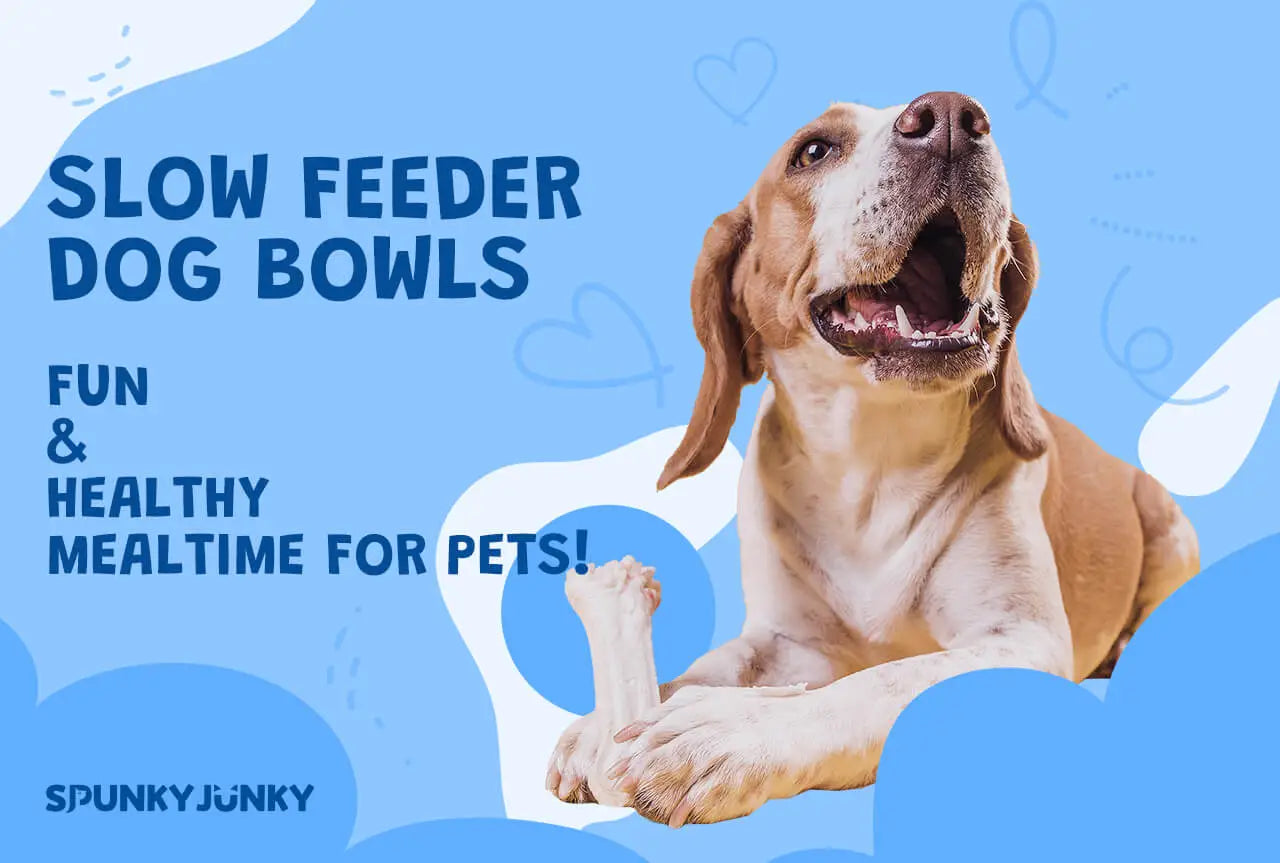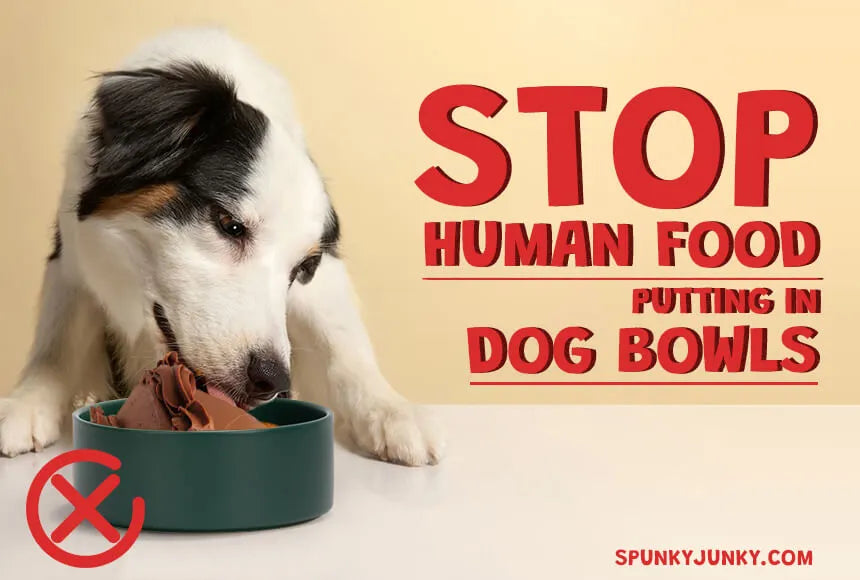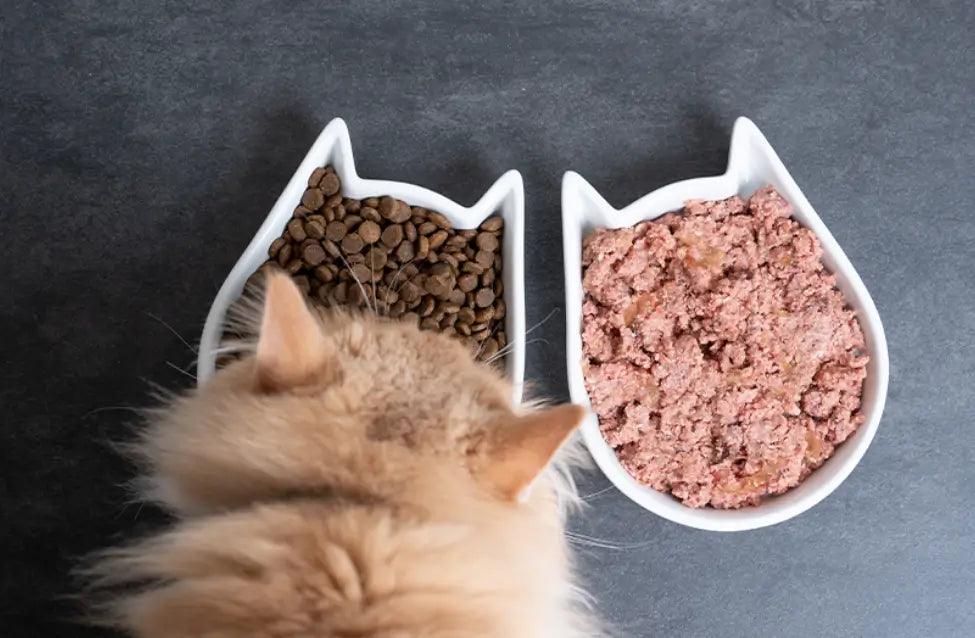Hey, young pawrents! Are you ready to go on a fun adventure and learn about something super cool for your furry friends?
Today, we're going to explore the amazing world of slow feeder dog bowls. These special bowls can make mealtime fun and healthy for your adorable dogs. So, get ready to dive into the magic of slow feeder bowls!
What is a Slow Feeder Dog Bowl?
Slow feeder dog bowl is a special bowl for dogs that makes mealtime fun and healthy. These bowls have unique designs to help dogs eat slower and enjoy their food.
Unlike regular dog bowls, slow feeder bowls are designed with various obstacles, ridges, or puzzle-like patterns, making it a little harder for dogs to gobble their food. This means dogs must navigate around them or work harder to get their food.
To sum it up, slow feeders are specially designed dog bowls to slow down eating. They make mealtime more exciting and prevent dogs from eating too quickly. It's like a game that makes mealtime a lot of fun!
Why Do Dogs Need Slow Feeder Bowls?
Have you ever wondered why some dogs need slow feeder bowls? Well, let me tell you about the science behind them! Dogs, just like us, can sometimes eat too quickly, which may cause problems. But why is eating too fast a problem for dogs?
Dogs often swallow a lot of air along with their food when they eat too quickly. This can lead to discomfort, bloating, and even tummy troubles. Slow feeder dog bowls were created to help solve this issue. They are specially designed bowls with obstacles, ridges, or patterns inside that make dogs eat at a slower pace.
The science behind the slow feeder for dogs is fascinating. The obstacles inside the bowls make it more challenging for dogs to access their food. They have to work around these obstacles, taking smaller bites and chewing their food more thoroughly. By doing so, dogs eat at a healthier pace and reduce the amount of air they swallow.
Not only do slow feeders promote better digestion and prevent discomfort, but they also provide mental stimulation for dogs. Figuring out how to navigate around the obstacles inside the bowl turns mealtime into a fun and engaging puzzle for them.
So, why do dogs need slow feeder bowls? Dogs need them to slow their eating and avoid tummy troubles caused by swallowing too much air. The obstacles inside the bowls help dogs eat at a healthier pace and provide mental stimulation during mealtime. It's like turning their meal into a fun game while keeping them happy and healthy!
Remember, a slow feeder bowl can be a great solution if you have a dog who tends to eat too quickly. It's a simple way to make mealtime safer, more enjoyable, and healthier for your furry friend.

Benefits of Slow Feeder Dog Bowl
When dogs eat too fast, it can make them feel uncomfortable and sick. Slow feeders help dogs eat at a nicer pace, which is better for their health. Here are some benefits:
1. No more tummy troubles: Slow feeders help dogs avoid tummy troubles like feeling bloated or getting sick after eating. Eating slowly helps their digestion work better.
2. Healthy eating: Dogs who eat too fast may need to chew their food correctly. Slow feeders make dogs chew their food more, which is good for their teeth and digestion.
3. Weight management: Eating too quickly can make dogs gain too much weight. Slow feeders make dogs eat slower, so they don't overeat and stay a healthy weight.
4. Fun and stimulation: Slow feeders make mealtime more fun for dogs! They have obstacles or puzzles inside that make eating a fun challenge. Dogs enjoy the mental stimulation and it adds excitement to their mealtime.
So, using a slow feeder for your dog has lots of benefits. It keeps them healthy, helps with digestion, manages their weight, and makes mealtime a fun adventure!
Types of Slow Feeder Bowls

There are different types of slow feeder bowls so that you can find the perfect one for your furry friend. Let's take a look at some of them:
1. Puzzle Bowls: These bowls have fun twists and turns that make dogs work harder to get their food. It's like solving a puzzle to find the tasty treasure!
2. Ridged Bowls: Such dog bowls have special ridges or grooves that slow down eating. Dogs have to eat around the ridges, which makes their mealtime last longer.
3. Food-Dispensing Toys: These are like magic toys that give out food bit by bit. Dogs have to play and interact with the toy to get their tasty rewards. It's like a game they can play while they eat!
Popular Material for Slow Feeder Bowls
I'm sure you have seen those above dog bowls before, but do you know what the popular slow food bowl materials are?
● Plastic: Plastic is a common material used in the production of slow feeding bowls. It is lightweight, durable, and affordable, making it a popular choice. Plastic bowls often have raised ridges or obstacles on the inside to slow down eating.
● Silicone: Silicone is a flexible and soft material that is becoming increasingly popular for slow feeding bowls. It is safe, easy to clean, and often dishwasher-safe. Silicone bowls are often collapsible, making them convenient for travel.
● Ceramic: Ceramic slow feeding bowls are made from clay that is fired in a kiln. They are sturdy and can be decorated with colorful designs. Ceramic bowls are heavier than other materials, which can make them more stable during mealtime.
● Bamboo: Bamboo slow feeding bowls are an eco-friendly option. Bamboo is a sustainable and renewable resource. Bowls made from bamboo fibers are durable, lightweight, and biodegradable. They often have raised patterns on the inside to slow down eating.
Each material has its unique qualities and benefits. When choosing a slow feeding bowl, consider factors such as durability, ease of cleaning, and your dog's preferences. Ultimately, the most important thing is to select a bowl that suits your dog's needs and promotes healthy eating habits.
Tips for Using Slow Feeder Bowls
As we know many things about slow feeders, There are some tips for you when you use it:
1. Take it slow: When using a slow feeding bowl, start with a little bit of food. Then, increase the amount gradually. This helps your dog get used to the bowl and eat slower.
2. Keep an eye on: It's a good idea to watch your dog while they eat from the slow feeding bowl. Ensure they're comfortable and understand how to eat around the obstacles or patterns inside.
3. Start easy: If your dog is new to slow feeding bowls, begin with a bowl with easier obstacles. As they get better, you can try bowls with more challenging designs.
4. Right size matters: Pick a bowl just the right size for your dog. It should hold their average amount of food without being too big or overwhelming. This way, they can eat easily but still slow down.
5. Keep it clean: Remember to clean the slow feeding bowl regularly. Some bowls can be washed in the dishwasher, while others need to be hand-washed. Ask an adult to help you with this.
6. Water breaks: After eating from a slow feeding bowl, pay attention to your dog's water intake. They might want to drink more water because they've been chewing their food more. Make sure they always have fresh water to drink.
7. Watch and learn: Observe how your dog is doing with the slow feeding bowl. If they're having a hard time or getting frustrated, try a different bowl or ask an adult, like a vet, for help.
Remember, using a slow feeding bowl helps your dog eat better and have more fun during mealtime. Just be patient and kind to your furry friend as they learn to enjoy their meals more healthfully!
How Do you Clean a Slow Feed Dog Bowl?
As we talked a lot about using tips for slow feeder dog bowls, it's necessary to tell you how to clean them. In fact, cleaning a slow-feeder dog bowl depends on the type of bowl type. Here's how you can clean each type:
● Puzzle Bowls:
● Ridged Bowls:
● Food-Dispensing Toys:
One thing you need to keep in mind is to consult the specific cleaning instructions provided by the manufacturer for your particular slow feeder dog bowl.

Frequently Asked Questions:
Q: Are slow feeder dog bowls good for dogs?
A: Yes, slow-feeder dog bowls can be beneficial for dogs.
These bowls slow dogs' eating to prevent bloating, vomiting, and other digestive disorders.
Q: Do golden retrievers need slow feeder bowls
A: Golden Retrievers' eating habits vary, therefore slow feeder bowl isn't a necessity. Observe your Golden Retriever's eating habits and consult with your veterinarian to determine if a slow feeder bowl is needed.
Q: Can you put wet dog food in a slow feeder bowl?
A: Yes, you can put wet dog food in a slow feeder bowl. Slow feeder bowls are not limited to dry kibble and can be used with various types of dog food, including wet or moist food. When using a slow feeder bowl with wet food, you can spread or place the food in the crevices or compartments of the bowl, allowing your dog to work to access the food and slow down their eating pace. Make sure to clean the slow feeder bowl thoroughly after each use to maintain hygiene.
Congratulations, young pet parents! You've now discovered the magic of slow feeder dog bowls. These incredible bowls make mealtime fun, healthy, and exciting for your furry pals. By using slow feeder bowls, you're showing your dogs extra love and care during their meals.
Remember, slow feeder bowls help dogs eat at a nice pace, so they feel good and avoid tummy troubles. They also provide mental stimulation, keeping dogs sharp and engaged during mealtime. So, choose a slow feeder bowl that suits your dog's style and watch their mealtime joy unfold!
With slow feeder bowls, mealtime becomes a fantastic adventure, and your furry friend will be wagging their tail with delight. Enjoy the wonderful world of slow feeder bowls and give your furry pal the best mealtime!






